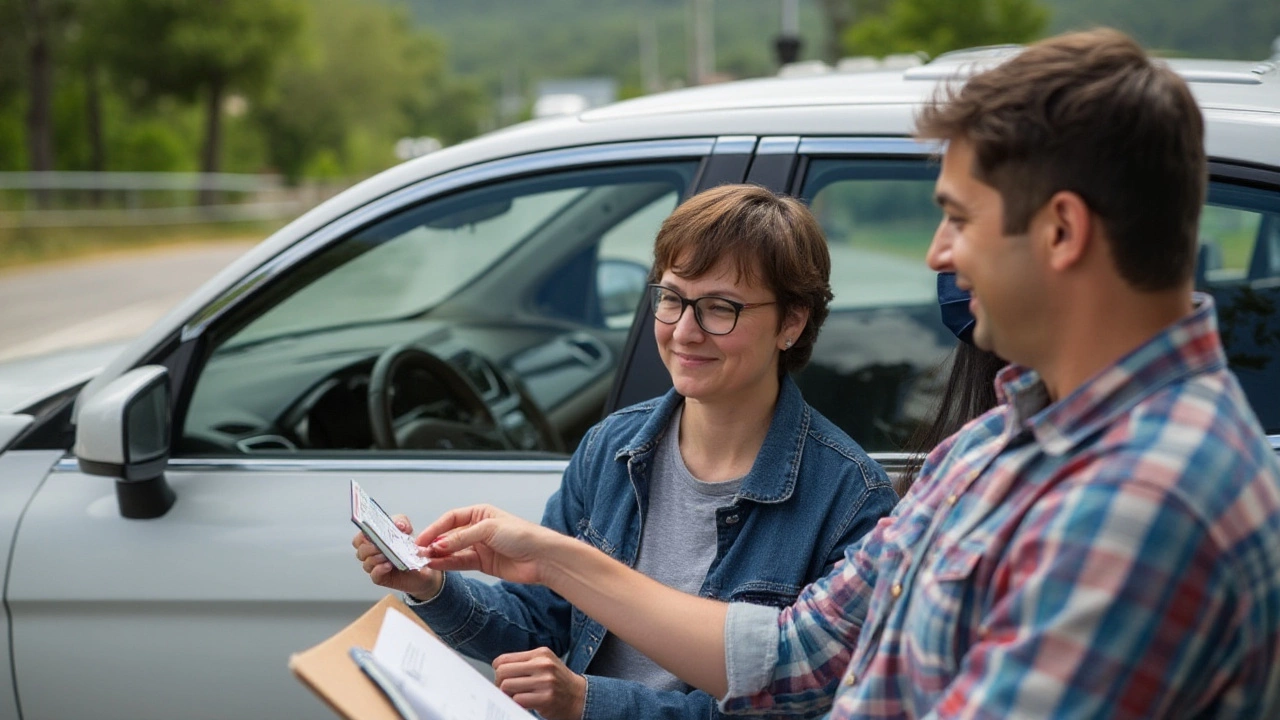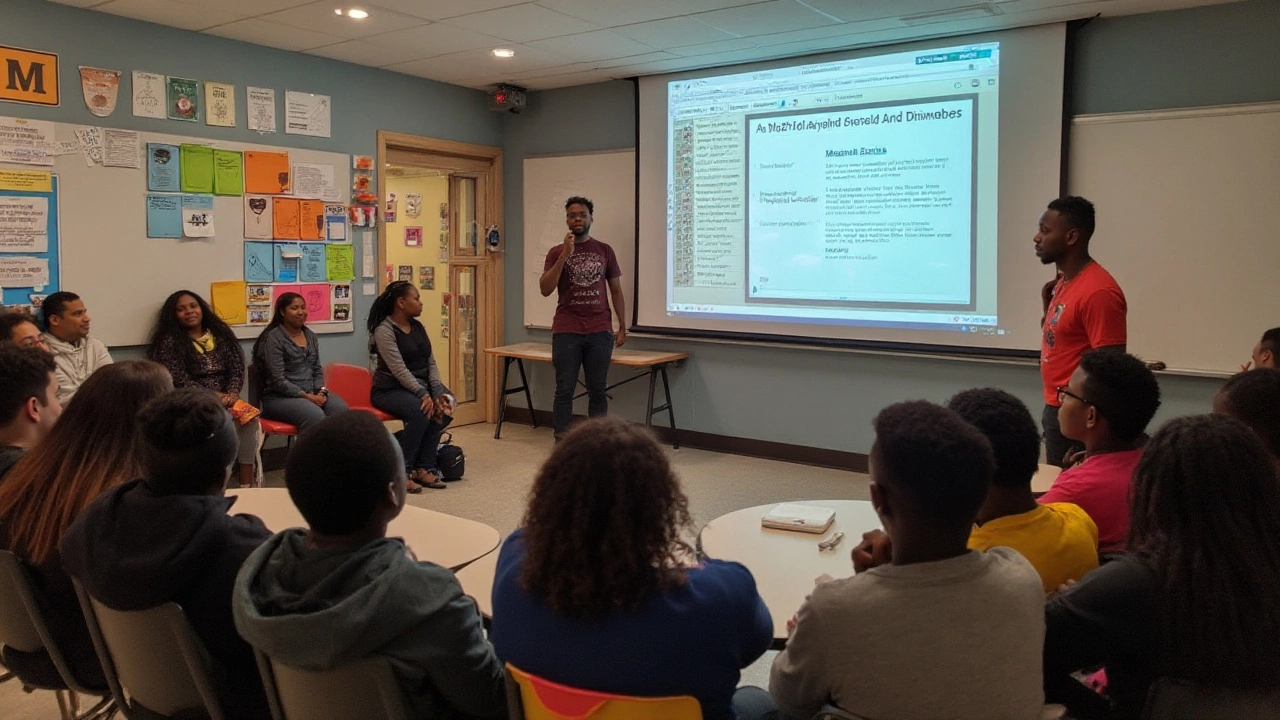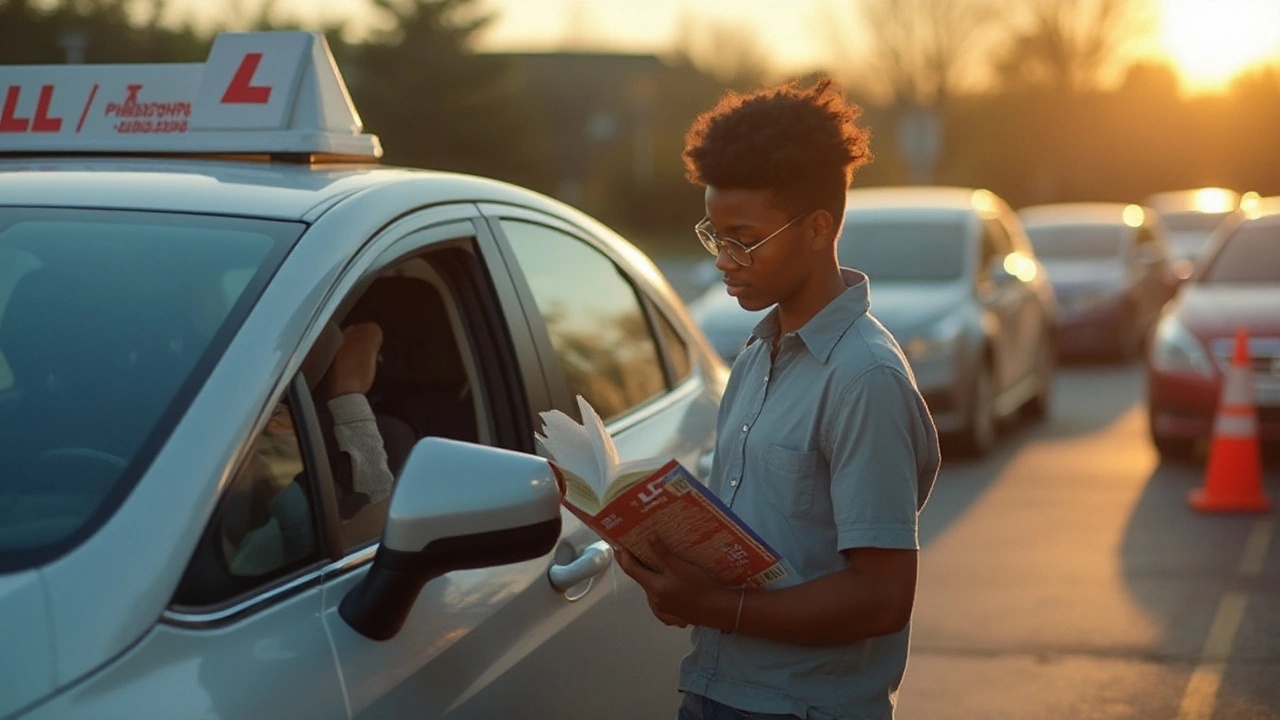Making the leap from a provisional to a full driver's license in Maryland is like your first big step towards independence on the road. There's a particular path you have to follow, filled with rules and requirements designed with safety in mind. Knowing what’s needed can transform what might feel like a daunting process into a straightforward journey.
If you’re holding a provisional license, you're already on the right track. This type of license is regulated to help novice drivers gather necessary experience under less risky conditions. You'll need to log a specific amount of driving hours, but these rules exist to ensure that you're well prepared when you finally attain full driving privileges.
Whether you’re just curious or fully gearing up to take the plunge, stick with me. We'll walk through each crucial step, provide tips for your driving journey, and highlight aspects you should definitely be mindful of as you edge closer to that desired full license status.
- Understanding Provisional Licenses in Maryland
- Steps to Progress to a Full License
- Requirements and Conditions
- Tips for New Drivers
- Common Pitfalls to Avoid
Understanding Provisional Licenses in Maryland
In Maryland, a provisional license is a stepping stone between being a learner and achieving the full driving privileges that come with an unrestricted license. This interim license is part of the Graduated Driver Licensing (GDL) program, which is designed to enhance the safety of young motorists by providing them with time to experience driving under conditions deemed less risky. For new drivers, particularly teenagers, the provisional license phase is an essential period. During this time, they are required to develop their skills and judgment before obtaining a full license.
The process to secure a provisional license begins after successfully completing both the Maryland Driver's Education Course and holding a learner's permit for a minimum number of months, typically nine months. During this period, young drivers are encouraged to gain as much supervised driving experience as possible. The law mandates at least 60 hours of driving practice, which includes 10 hours at night. It's essential to record these hours meticulously because they must be documented and submitted as part of the application for a provisional license.
Provisional licenses come with a set of restrictions tailored to promote safe driving practices. Young drivers are prohibited from driving between midnight and 5 a.m., unless they are accompanied by a qualified supervising driver, are involved in volunteer programs, or are going to or from work or a school-sanctioned event. Besides, drivers under 18 are not allowed to carry non-family member passengers under the age of 18 for the first 151 days of having the provisional license. The point is to minimize distractions and potential street racing situations that can arise from unsupervised night driving or having multiple youths in the car.
Interestingly, according to the data, Maryland's strategic enforcement of these rules has contributed to a significant reduction in teen driving accidents. A study conducted by the Insurance Institute for Highway Safety indicates a decrease in fatal crashes involving young drivers across the state since the introduction of GDL laws. The requirements of a provisional license are certainly crucial in this positive trend, highlighting the importance of giving young drivers the time and regulated environment to mature as safe and responsible motorists.
For those looking to advance from a provisional license to a full Maryland license, it's crucial to maintain a clean driving record during the provisional period. Accumulating points due to traffic violations can extend the provisional phase or even result in a suspended license. Safe and responsible behavior behind the wheel is expected and encouraged through the program's structure. As new drivers navigate through this period, they not only build vital skills but also gain confidence on the road, ensuring safer journeys for themselves and other road users. A successful completion of this stage not only secures mobility freedom but also contributes to a robust foundation for lifelong safe driving habits.
Steps to Progress to a Full License
Starting your journey from a provisional to a full license in Maryland requires understanding a sequence of well-defined steps. The very first thing you need to possess is a provisional license, which you likely have already. This initial license is granted to individuals usually at least 16 years and six months old, but transitioning to a full license means you've got to show consistent and responsible driving.
During the provisional period, you are expected to complete a set of supervised driving hours. Maryland requires that you drive for at least 60 hours under supervision, with 10 of these occurring at night. Tracking these hours can be easier if you keep a log, noting each drive’s duration, conditions, and any specific observations about your driving behavior. The goal is to help new drivers understand diverse driving conditions across Maryland's varied roads and climates.
At the end of the provisional period, typically 18 months, moving forward requires maintaining a clean driving record during this time. Minor setbacks such as traffic tickets or accidents can push back this 18-month wait. It's good to be vigilant and avoid problematic situations—both for your safety and to ensure you don't face delays. Additionally, certain common curfews and passenger restrictions often apply to provisional drivers, aimed at minimizing distractions and risks.
Once you've met these conditions, the transition to a full license awaits. A key consideration is passing the Maryland driver's skills test, evaluating your ability to adapt to different traffic scenarios. Reflect on tips from seasoned drivers or consult online resources to enhance your skills before taking the test. Becoming a full license holder also lifts specific restrictions like passenger limits and driving curfews, giving you the freedom to drive under the same regulations as veteran drivers.
"Navigating this path involves patience and commitment," advised Susan Jones, a seasoned Maryland driving instructor. "Approach every mile as a learning experience, and you'll find transitioning a rewarding process."
Scoring high on practice exams can help you feel more confident on the actual test day. Be sure to check out available online and free resources from Maryland's public safety departments. There are ample test questions and guides that simulate real assessments, helping you get into the right training mindset. Consistency in preparation can't be overstated enough, providing the prime edge for earning your full license.

Requirements and Conditions
When it comes to making the switch from a provisional license to a full license in Maryland, understanding the requirements is key. The provisional period is like a probationary stage intended to hone your driving abilities while you familiarize yourself with real-world driving situations. During this phase, new drivers are expected to comply with specific conditions aimed at bolstering road safety. One of the primary requirements is maintaining a clean driving record for at least 18 months. Think of it as a commitment to being a safe and responsible driver—this is Maryland's way of ensuring you're ready for the freedom a full license entails without compromising safety.
In addition to a spotless driving record, it's crucial to be aware of the prohibition against driving between midnight and 5:00 a.m. for provisional license holders under age 18. There are exceptions, such as traveling for school activities or employment, but these exceptions should be approached with care. Also, during the provisional phase, one is limited to carrying passengers. For the initial five months, you must not have passengers under 18 unless they are family members, such as a sibling. The rationale behind these restrictions is to minimize distractions and encourage newfound drivers to focus on mastering the art of safe driving.
Another vital condition is accruing 60 hours of supervised driving, with at least 10 of those hours logged during the night. This experience provides a well-rounded skill set, preparing the driver for a variety of situations they may encounter. Upon satisfying these stipulations, drivers must take and pass the driver's skills test, demonstrating sufficient proficiency behind the wheel. According to Maryland's Motor Vehicle Administration, "Fostering a thorough understanding of the road rules and safe driving practices is paramount."
According to a study by the National Highway Traffic Safety Administration, states with graduated driving systems, like Maryland's, have considerably reduced crash rates among young drivers.
Lastly, there's a financial aspect to consider. While Maryland's fees for transitioning between license stages are typically modest, being aware of current costs is necessary for planning purposes. Handling each of these steps with care ensures a smooth transition to a full license, paving the way for the freedom and responsibilities that come with it. Preparing ahead, understanding the requirements, and keeping your eyes on the prize—becoming a safe, independent driver—is a tried and tested strategy for success on the road.
Tips for New Drivers
It’s exciting and a bit nerve-wracking to step into the driver's seat, especially when you're navigating your way towards a full license in Maryland. This phase is not just about crossing the finish line to gain a full license; it's about building lifelong skills. One of the first things to keep in mind is to stay patient and patient with yourself. Learning to drive is like any other skill; practice and a calm demeanor are your best allies. Don’t rush your practice hours. Quality is key here, and each minute spent behind the wheel is sowing seeds for your future driving safety.
Being aware of your surroundings is crucial. This isn’t just about other cars on the road; it’s about pedestrians, pets, and even environmental changes like sudden rain or fog, which are quite common in certain areas of Maryland. Defensive driving is a must-learn skill. Keeping a safe distance from the car in front of you, anticipating traffic light changes, and understanding the local speed limits can considerably reduce your risk of accidents. Remember, as a new driver, you're under more scrutiny. Many new drivers find it helpful to have a set driving route to practice regularly. It helps build confidence and familiarity with your car and the road conditions.
Managing Anxiety and Distractions
Even experienced drivers get anxious on the road at times. As a beginner, it’s not uncommon to feel the same. The important thing is not to let anxiety control you. Plan your drives for times when traffic is lighter, which can help reduce stress. Make sure to limit distractions within the car. Keep your phone in a glove box or out of view—texts and calls can wait. Some drivers find it beneficial to drive with music to calm nerves, but keep it at a level that doesn’t drown out alert sounds like car horns or emergency vehicle sirens.
Taking breaks is equally important. If you’re on a long drive, don’t hesitate to pull over safely for a quick rest if you’re feeling overwhelmed or tired. The ability to maintain focus is crucial, so never underestimate the power of a small break. Effective time management on the road is a skill that's often underestimated. Whether you’re commuting to work or headed out for a road trip, give yourself plenty of time. Rushing adds pressure and heightens the temptation to speed. Instead, take your time, enjoy the drive, and stay safe.
Leveraging Available Resources
There are numerous resources available to help you become a better driver. Local driving schools in Maryland offer refresher courses, and many insurance companies provide discounts for policyholders who complete specific driving programs. Consider taking advantage of technology too. Smart apps are available that track your driving habits and provide personalized feedback. Tapping into online communities can also be an excellent way to learn from other drivers' experiences. They might have valuable insights or tips that you haven't encountered.
"Becoming a good driver takes commitment and practice. It’s not just about learning the mechanics of driving, but understanding the responsibility you hold." – National Safety Council
Seeking guidance from seasoned drivers is also a step towards improving your driving skill set. Whether it’s your parents, older siblings, or even friends who’ve been driving for longer—most people are happy to share their tips and tricks for steadying the wheel and the nerves. With determination and by being open to learning, you'll find that the doors to achieving a full license in Maryland are entirely within reach. With each drive, your confidence will grow stronger.

Common Pitfalls to Avoid
Acquiring a full license in Maryland might seem straightforward, but several common pitfalls can stall your progress. It’s critical to know what they are to ensure a smooth transition. One major mistake is neglecting to track your driving experience. Maryland requires you to complete specific driving hours under a provisional license, and failing to maintain accurate records could mean you have to extend your learning period. It’s best to keep a detailed log of your driving time, noting each hour spent behind the wheel. Many drivers have found success using apps or old-fashioned notebooks to manage this task.
Another hazard on the road to a full license is racking up traffic violations. Maryland’s rules are strict, and any infraction could delay obtaining that coveted full license. Pay close attention to speed limits, signaling, and stop signs. Keeping a clean record is vital because your driving habits are under scrutiny. In some cases, even small mistakes like a parking ticket can have unintended consequences for new drivers. Being mindful of the law and demonstrating responsibility on the road is not only a step forward in getting your license but also a lifetime habit worth developing.
Time management is also a critical factor that often trips up aspiring drivers. Many people underestimate the time it takes to transition and leave the required tasks to the last minute. Calculate how long it will take to complete your driving hours and factor in additional time in case you need more practice or need to retake any tests. More so, scheduling the skills or road tests too late can mean a longer wait time, as testing centers can be booked weeks in advance. Being proactive here can actually lead to an earlier attainment of your full driving privileges.
Equally important is the preparation for your driving test. It’s surprising how many provisional license holders go for their test unprepared. You should consistently practice the necessary maneuvers such as parallel parking, making three-point turns, and steering control. Familiarize yourself with the test routes if possible and consider enrolling in a driver’s education course. These courses often cover aspects of the test in detail, giving you that extra edge needed to pass with flying colors.
"Remember, preparation is key. It's more than just about driving; it's about driving well." ― Anonymous MD Driving Instructor
Finally, staying informed about Maryland license regulations is crucial. Laws change, and being abreast of current traffic laws ensures you’re not caught off guard. Regularly checking the Maryland Department of Transportation’s website for updates or changes can help you remain compliant and ready for any changes that might affect your licensing journey. With knowledge and diligence, transitioning to a full driving license in Maryland is entirely within your grasp.

